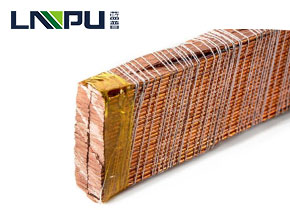Unveiling the Wonders of Continuously Transposed Cable
In the world of electrical engineering, innovation and advancements continually reshape the way we transmit and distribute power. One such remarkable development is the introduction of Continuously Transposed Cable (CTC). This cutting-edge technology revolutionizes the efficiency and performance of power transmission systems. In this blog, we'll delve into the fascinating world of Continuously Transposed Cable, exploring its benefits, applications, and the impact it has on the future of electrical infrastructure.
Understanding Continuously Transposed Cable:
Continuously Transposed Cable, also known as CTC, is a type of power cable designed to reduce electrical losses and improve the overall efficiency of electrical transmission. Its structure comprises multiple layers of conductors that are continuously transposed, or interchanged, within the cable's insulation.
Benefits of Continuously Transposed Cable:
Enhanced Efficiency: One of the significant advantages of CTC is its ability to reduce electrical losses during transmission. The continuous transposition of conductors helps minimize the skin effect and proximity effect, which are responsible for energy loss. By evenly distributing the current across the cable, CTC significantly improves the efficiency of power transmission systems.
Increased Capacity: CTC's design allows for higher current-carrying capacity compared to traditional power cables. The reduction in electrical losses and optimized conductor arrangement enable more power to be transmitted without exceeding the cable's thermal limits. This enhanced capacity is particularly beneficial in high-demand applications, such as industrial plants and urban power grids.
Improved Reliability: The continuous transposition of conductors in CTC helps mitigate the effects of harmonic distortion and voltage imbalances. This results in a more stable and reliable power supply, reducing the likelihood of electrical faults and failures. The enhanced reliability of CTC translates into reduced downtime and maintenance costs for power distribution networks.
Applications of Continuously Transposed Cable:
Power Transmission Grids: CTC finds extensive use in high-voltage power transmission grids, where efficient and reliable energy transfer is crucial. Its ability to handle higher currents and minimize losses makes it an ideal choice for long-distance power transmission projects.
Renewable Energy Systems: As the world transitions towards clean and sustainable energy sources, CTC plays a vital role in facilitating the integration of renewable energy systems. Wind farms, solar power plants, and other green energy installations benefit from CTC's enhanced efficiency and increased capacity, ensuring a smooth and reliable power supply.
Industrial Applications: Industries with heavy power requirements, such as steel plants, aluminum smelters, and chemical refineries, can leverage the advantages of CTC. Its higher current-carrying capacity and improved reliability make it well-suited for demanding industrial environments.
The Future of Continuously Transposed Cable:
Continuously Transposed Cable represents a significant leap forward in power transmission technology. As we strive for more efficient and sustainable energy systems, CTC's role will continue to grow. Ongoing research and development aim to refine its design and further enhance its performance, ensuring even greater efficiency, reliability, and capacity.
Conclusion:
Continuously Transposed Cable is a groundbreaking innovation that has transformed the landscape of power transmission. Its ability to minimize electrical losses, increase capacity, and improve reliability make it a key player in modern electrical infrastructure. With its wide range of applications and ongoing advancements, CTC holds tremendous potential to shape a more efficient and sustainable future for our power systems.
Tags: ctc, enameledwire, lpindustry
Replies to This Discussion
© 2025 Created by Jeremiah MARSHALL Founder/ C CEO.
Powered by
![]()
